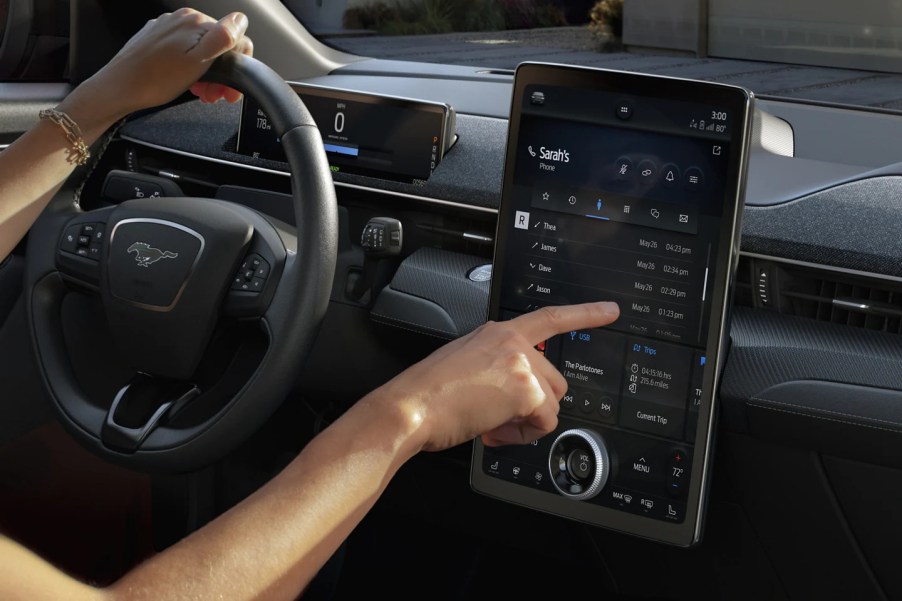
Infotainment Screens Keep Growing but Safety Regulations Don’t
One of the most popular growing trends in the automotive world is massive infotainment screens. As technology advances, automakers want a more prominent space to display all the unique features. As a result, it’s as if there’s a contest to see who can put the largest infotainment screen inside their cars. The problem is that there could be safety concerns with massive screens. In short, the infotainment screens keep growing, but safety regulations don’t. Why aren’t we preventing distracted driving?
Why are growing infotainment screens a safety concern?

According to Newsweek, the increased size and landscape of infotainment screens concern safety experts. Furthermore, distracted driving is the primary concern, and it’s hard not to look at the gigantic displays. Consumers in 2022 require cars to allow them to perform many actions. Receiving phone calls, sending texts, changing music, and using a navigation system are vital capabilities. Consequently, vehicles that don’t have this functionality are widely considered outdated and cheap.
However, those things are precisely why road safety experts are concerned. There’s a higher potential for distracted driving with larger displays. Whether they realize it or not, the more significant displays always catch the eye while driving. It doesn’t matter if it’s a text message popping up or just a song changing; any activity can distract the driver’s eyes away from the road.
Infotainment screens need to command less driver attention

“Regardless of how large the screens are, these systems need to be designed to command as little of the driver’s attention as possible. Systems can integrate voice commands, for example, which IIHS research has found to reduce glances away from the road. Voice commands should pick up natural speech, shouldn’t require a lot of steps and shouldn’t require on-screen confirmations,” the Insurance Institute for Highway Safety told Newsweek.
Next, a 2019 analysis by AAA confirmed that a driver is distracted for up to 40 seconds while inputting a new navigation destination. That’s the equivalent of roughly driving half a mile going 50 mph. In addition, AAA found that voice command technology is nearly just as distracting. That goes even further for older drivers, who struggle with using voice commands.
Finally, in 2020, the Transportation Research Board, a part of the National Academies of Sciences, Engineering, and Medicine, performed its own study. This one found that drivers using Apple CarPlay or Android Auto had slower reaction times to road conditions than people under the influence of marijuana.
Screens are more distracting, but no new safety regulations have surfaced
In 2013, the National Highway Traffic Safety Administration released guidance for distracted driving. Note that it’s only guidance, not laws or regulations. Furthermore, the NHTSA’s guidance asked for infotainment tasks to take two seconds or less. Additionally, they should never take a driver more than 12 seconds. Lastly, the NHTSA asked automakers to make social media or video access for parked cars only. These are the two most distracting things that can be on any screen. A driver’s ability to play a video or read social media would be disastrous.
“…distraction remains a major issue on our roads alongside other problematic behaviors like impaired driving, failing to buckle up and speeding. We’ve got to get serious about addressing these behaviors if we want to eliminate or even significantly reduce fatalities on our roadways,” the IIHS told Newsweek.
Safety regulations need to grow as much as infotainment screens
In conclusion, vehicles now have massive and still growing infotainment screens. The bigger they are, the more distracted the driver becomes. Agencies like the IIHS, AAA, NHTSA and more are concerned about the lack of increased safety regulations. Bigger screens and more features heavily contribute to distracted driving. That’s why there needs to be rules for automakers to only implement functions that take a few seconds, at least while the car is moving. For now, infotainment screens keep growing, but safety regulations don’t.



